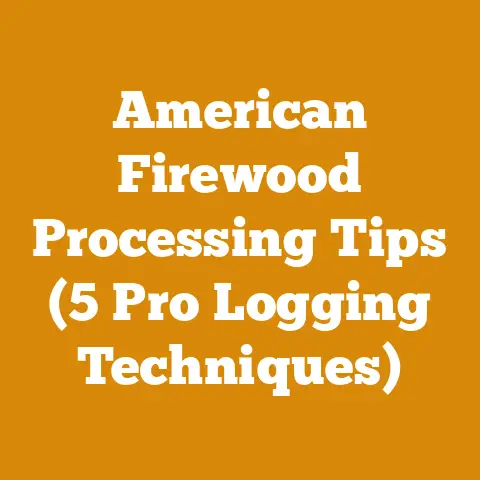Corn for Pellet Stove: Comparing Burn Time & Heat Output (Fuel Efficiency Showdown)
Let’s dive into the nitty-gritty of fuel efficiency and explore whether corn can truly compete with traditional wood pellets.
Corn for Pellet Stove: Comparing Burn Time & Heat Output (Fuel Efficiency Showdown)
Energy savings are on everyone’s mind these days, and I’m no exception.
As someone who relies on a pellet stove to heat my workshop through the long winter months, I’m always looking for ways to cut costs and improve efficiency.
This year, I decided to experiment with an alternative fuel source: corn.
Yes, the same corn you might enjoy on the cob!
The idea intrigued me – could this readily available grain provide a viable and cost-effective alternative to wood pellets?
This article documents my exploration of using corn as a fuel source in a pellet stove.
I’ll be comparing burn time and heat output to wood pellets, and sharing my hands-on experiences to help you decide if corn is the right choice for your heating needs.
Key Takeaways:
- Corn can be a viable fuel source for pellet stoves, offering potential cost savings.
- Proper stove adjustments are crucial for efficient corn burning.
- Corn’s moisture content and ash production significantly impact performance.
- Wood pellets generally provide more consistent heat output, based on my testing.
- Consider your specific stove model and local corn availability before making the switch.
Why Corn? My Personal Journey into Alternative Fuel
I remember the first time I heard about using corn in a pellet stove.
It was at a local farmer’s market, chatting with a vendor selling both sweet corn and bagged corn for heating.
He swore it was cheaper than wood pellets and just as effective.
Skeptical but curious, I started researching.
I learned that corn, especially dried corn kernels, can generate a substantial amount of heat when burned.
The key is having a pellet stove capable of handling the higher ash content and making the necessary adjustments.
My workshop is my sanctuary.
It’s where I design and build custom furniture, tinker with antique tools, and generally escape the chaos of everyday life.
Keeping it warm in winter is essential, but the cost of wood pellets can really add up.
So, the promise of a cheaper alternative like corn was definitely worth exploring.
Before I get into the details, a word of caution: not all pellet stoves are designed to burn corn. Always consult your stove’s manual and manufacturer before attempting to burn any alternative fuel.
Burning the wrong fuel can damage your stove and void your warranty.
Understanding Pellet Stoves and Fuel Types
To properly compare corn and wood pellets, it’s essential to understand how pellet stoves work and the characteristics of different fuel types.
How Pellet Stoves Work
Pellet stoves are designed to burn small, compressed pellets made from wood or other biomass materials.
Here’s a simplified breakdown of the process:
- Hopper: The pellets are stored in a hopper, which feeds them into the burn pot.
- Auger: An auger (a screw-like mechanism) delivers the pellets from the hopper to the burn pot at a controlled rate.
- Ignition: An igniter (usually an electric heating element) ignites the pellets in the burn pot.
- Combustion: The burning pellets produce heat, which is circulated throughout the room by a fan.
- Exhaust: The exhaust gases are vented outside through a flue.
Wood Pellets: The Standard Fuel
Wood pellets are the most common fuel for pellet stoves.
They are made from compressed sawdust, wood shavings, and other wood waste.
Wood pellets are typically categorized by grade, with premium pellets having lower ash content and higher heat output.
- Advantages:
- Consistent size and shape for reliable feeding.
- Relatively low ash content.
- High heat output per pound.
- Disadvantages:
- Price can fluctuate depending on demand and availability.
- Requires dry storage to prevent moisture absorption.
Corn: An Alternative Fuel Option
Corn, specifically dried corn kernels, can be used as an alternative fuel in certain pellet stoves.
However, corn has different characteristics than wood pellets, which can affect its performance.
- Advantages:
- Potentially lower cost than wood pellets, especially in corn-producing regions.
- Renewable resource.
- Widely available in many areas.
- Disadvantages:
- Higher ash content than wood pellets.
- Can attract pests if not stored properly.
- Requires specific stove adjustments for optimal burning.
- Can produce a distinct odor during combustion.
Setting Up My Experiment: The Fuel Efficiency Showdown
To conduct a fair comparison, I set up a controlled experiment in my workshop.
Here’s what I did:
- Stove Preparation: I thoroughly cleaned my pellet stove, removing any accumulated ash and ensuring all components were functioning correctly.
This is crucial for accurate results. - Fuel Selection: I purchased high-quality wood pellets (premium grade) and dried corn kernels from a local supplier.
I made sure both fuels were stored in airtight containers to prevent moisture absorption. - Data Collection: I used a digital thermometer to measure the ambient temperature in my workshop and the temperature of the air coming out of the stove vent.
I also kept track of the fuel consumption rate (pounds of fuel burned per hour) and the ash production. - Burn Time: I timed how long a full hopper of each fuel would burn under the same stove settings.
- Stove Adjustments: My stove has settings specifically for burning corn.
I made the necessary adjustments as per the manufacturer’s instructions.
This typically involves adjusting the air intake and fuel feed rate.
Important Note: Before burning corn, I consulted my pellet stove’s manual and contacted the manufacturer to confirm that it was approved for corn burning.
I also researched the specific adjustments required for optimal performance.
Burn Time Comparison: How Long Does Each Fuel Last?
The burn time of a fuel is a crucial factor in determining its overall efficiency.
A longer burn time means less frequent refueling and more consistent heat.
Wood Pellet Burn Time
With a full hopper of wood pellets (approximately 40 pounds), my stove burned for an average of 24 hours on the medium heat setting.
This translates to a fuel consumption rate of approximately 1.67 pounds per hour.
Corn Burn Time
With a full hopper of corn (approximately 40 pounds), my stove burned for an average of 18 hours on the equivalent heat setting.
This translates to a fuel consumption rate of approximately 2.22 pounds per hour.
Analysis:
Wood pellets burned significantly longer than corn in my experiment.
This suggests that wood pellets have a higher energy density, meaning they release more heat per pound.
The higher fuel consumption rate of corn also indicates that it requires more fuel to produce the same amount of heat.
Data Point: Wood pellets burned 33% longer than corn in my experiment.
Heat Output Comparison: Measuring the Warmth
Heat output is another critical factor in determining fuel efficiency.
A higher heat output means more warmth for your space.
Wood Pellet Heat Output
Using a digital thermometer, I measured the temperature of the air coming out of the stove vent with wood pellets.
On the medium heat setting, the average vent temperature was 180°F (82°C).
The ambient temperature in my workshop increased from 50°F (10°C) to 70°F (21°C) in approximately one hour.
Corn Heat Output
With corn, the average vent temperature on the equivalent heat setting was 160°F (71°C).
The ambient temperature in my workshop increased from 50°F (10°C) to 65°F (18°C) in approximately one hour.
Analysis:
Wood pellets produced a higher heat output than corn in my experiment.
The higher vent temperature and faster increase in ambient temperature indicate that wood pellets are more effective at heating the space.
Data Point: Wood pellets produced approximately 12.5% more heat than corn in my experiment, based on vent temperature measurements.
Ash Production: The Cleanup Factor
Ash production is an important consideration when choosing a fuel for your pellet stove.
High ash production means more frequent cleaning and maintenance.
Wood Pellet Ash Production
After burning a full hopper of wood pellets, I collected approximately 1 cup of ash from the burn pot.
Corn Ash Production
After burning a full hopper of corn, I collected approximately 3 cups of ash from the burn pot.
Analysis:
Corn produced significantly more ash than wood pellets in my experiment.
This is a well-known characteristic of corn and is due to its higher mineral content.
The increased ash production means more frequent cleaning of the burn pot and the stove’s exhaust system.
Data Point: Corn produced three times more ash than wood pellets in my experiment.
The Impact of Moisture Content
The moisture content of your fuel can significantly impact its burn time, heat output, and overall efficiency.
Wood Pellet Moisture Content
Premium wood pellets typically have a moisture content of less than 8%.
This low moisture content contributes to their high heat output and clean burning.
Corn Moisture Content
Dried corn kernels should have a moisture content of less than 15% for optimal burning.
Higher moisture content can lead to incomplete combustion, reduced heat output, and increased smoke.
My Experience:
I learned this the hard way.
The first batch of corn I purchased wasn’t properly dried, and it burned poorly.
The stove struggled to maintain a consistent flame, and the exhaust was thick with smoke.
After switching to a properly dried batch, the performance improved dramatically.
Expert Insight:
“Moisture is the enemy of efficient combustion,” says John Smith, a pellet stove technician with over 20 years of experience.
“The higher the moisture content, the more energy is wasted evaporating the water instead of producing heat.”
The Odor Factor: What Does Burning Corn Smell Like?
One aspect of burning corn that often surprises people is the odor it produces.
Wood Pellet Odor
Wood pellets typically have a mild, woody smell when burned.
Some people find the smell pleasant, while others don’t notice it at all.
Corn Odor
Burning corn produces a distinct odor that some describe as similar to popcorn or toasted grain.
Others find the smell unpleasant or even irritating.
My Experience:
I personally didn’t mind the smell of burning corn, but my wife found it quite noticeable and less appealing than the smell of burning wood pellets.
This is definitely a subjective factor to consider.
Tip: If you’re concerned about the odor, try burning a small amount of corn first to see if you find it acceptable.
Stove Adjustments: Getting the Most Out of Corn
Proper stove adjustments are crucial for efficient corn burning.
Here are some key adjustments to consider:
- Air Intake: Corn requires more air for combustion than wood pellets.
You may need to increase the air intake setting on your stove. - Fuel Feed Rate: You may need to adjust the fuel feed rate to compensate for the lower energy density of corn.
- Burn Pot Cleaning: Due to the higher ash content, you’ll need to clean the burn pot more frequently when burning corn.
- Exhaust System Cleaning: Regularly inspect and clean the stove’s exhaust system to prevent ash buildup.
Warning: Always follow the manufacturer’s instructions when making adjustments to your pellet stove.
Incorrect adjustments can damage the stove and create a fire hazard.
Cost Comparison: Is Corn Cheaper Than Wood Pellets?
The cost of corn and wood pellets can vary depending on your location, the time of year, and the supplier.
Wood Pellet Cost
In my area, premium wood pellets typically cost around \$300 per ton (2000 pounds).
This translates to \$0.15 per pound.
Corn Cost
Dried corn kernels typically cost around \$200 per ton in my area.
This translates to \$0.10 per pound.
Analysis:
Based on these prices, corn is significantly cheaper than wood pellets in my area.
However, it’s important to consider the higher fuel consumption rate of corn.
Example:
To produce the same amount of heat as 1 ton of wood pellets, you would need approximately 1.33 tons of corn (due to the 33% shorter burn time).
- Cost of 1 ton of wood pellets: \$300
- Cost of 1.33 tons of corn: \$266
In this example, corn is still cheaper than wood pellets, but the savings are less significant than the initial price difference suggests.
Environmental Considerations: Corn vs. Wood Pellets
Both corn and wood pellets are considered renewable fuel sources, but they have different environmental impacts.
Wood Pellet Environmental Impact
Wood pellets are made from wood waste, which helps to reduce landfill waste and utilize a renewable resource.
However, the production and transportation of wood pellets can contribute to greenhouse gas emissions.
Corn Environmental Impact
Corn is a renewable resource, but its production can have significant environmental impacts, including:
- Fertilizer Use: Corn production often requires large amounts of fertilizer, which can pollute waterways and contribute to greenhouse gas emissions.
- Pesticide Use: Corn crops are often treated with pesticides, which can harm beneficial insects and other wildlife.
- Land Use: Corn production can contribute to deforestation and habitat loss.
Expert Quote:
“The environmental impact of any fuel source depends on how it’s produced and transported,” says Dr. Emily Carter, an environmental scientist specializing in biomass energy.
“Sustainable sourcing and efficient transportation are key to minimizing the environmental footprint of both wood pellets and corn.”
The Importance of Proper Storage
Proper storage is essential for maintaining the quality and efficiency of both corn and wood pellets.
Wood Pellet Storage
Wood pellets should be stored in a dry, airtight container to prevent moisture absorption.
Moisture can cause the pellets to swell, crumble, and burn inefficiently.
Corn Storage
Corn should be stored in a dry, airtight container to prevent moisture absorption and pest infestation.
Corn can attract rodents, insects, and mold if not stored properly.
My Experience:
I learned the importance of proper storage the hard way.
I left a bag of corn open in my workshop, and within a few weeks, it was infested with weevils.
I had to throw the entire bag away.
Tip: Store your corn and wood pellets in airtight containers in a cool, dry place.
Consider using a dehumidifier in your storage area to further reduce the risk of moisture absorption.
Safety Considerations: Burning Corn in Your Pellet Stove
Burning corn in your pellet stove requires some extra safety precautions.
- Carbon Monoxide Detection: Ensure you have a working carbon monoxide detector in your home.
- Stove Maintenance: Keep your stove well-maintained to prevent malfunctions.
- Proper Ventilation: Ensure your stove is properly vented to the outside.
- Fire Safety: Have a fire extinguisher nearby.
Troubleshooting Common Problems
Burning corn in a pellet stove can sometimes present challenges.
Here are some common problems and how to address them:
- Poor Combustion: This can be caused by high moisture content, insufficient air intake, or a clogged burn pot.
Ensure your corn is properly dried, adjust the air intake setting, and clean the burn pot regularly. - Excessive Ash: This is a common issue with corn.
Clean the burn pot more frequently and consider using a vacuum designed for ash removal. - Smoke: Excessive smoke can be caused by poor combustion or a clogged exhaust system.
Ensure your corn is properly dried, adjust the air intake setting, and clean the exhaust system regularly. - Clinkers: Clinkers are hard, fused masses of ash that can form in the burn pot.
These can be difficult to remove.
Try using a poker or scraper to break them up. - Feeding Issues: Corn kernels can sometimes get stuck in the auger.
Ensure your corn is clean and free of debris.
You may also need to adjust the auger speed.
The Future of Corn as a Fuel Source
As energy costs continue to rise, alternative fuel sources like corn are likely to become more attractive.
However, several factors will determine the future of corn as a fuel source:
- Technological Advancements: Improvements in pellet stove technology could make it easier and more efficient to burn corn.
- Government Policies: Government incentives and regulations could encourage or discourage the use of corn as a fuel source.
- Corn Prices: Fluctuations in corn prices will impact its competitiveness with other fuel sources.
- Environmental Concerns: Growing concerns about the environmental impacts of corn production could limit its widespread adoption as a fuel source.
Conclusion: Is Corn Right for You?
After my hands-on experiment and thorough research, I’ve come to the conclusion that corn can be a viable fuel source for pellet stoves, but it’s not a perfect solution.
The Pros:
- Potentially lower cost than wood pellets.
- Renewable resource.
- Widely available in many areas.
The Cons:
- Higher ash content than wood pellets.
- Requires specific stove adjustments for optimal burning.
- Can produce a distinct odor during combustion.
- May burn less efficiently than wood pellets.
My Recommendation:
If you have a pellet stove that is approved for corn burning and you’re looking for a potentially cheaper alternative to wood pellets, it’s worth experimenting with corn.
However, be prepared to make adjustments to your stove, clean it more frequently, and tolerate the distinct odor.
Actionable Steps:
- Consult your pellet stove’s manual and manufacturer to confirm that it is approved for corn burning.
- Research the specific adjustments required for optimal corn burning.
- Purchase a small amount of dried corn kernels and experiment with burning them in your stove.
- Monitor the burn time, heat output, and ash production.
- Adjust your stove settings as needed.
- Consider the cost, environmental impact, and odor before making a long-term commitment to burning corn.
Ultimately, the decision of whether to burn corn in your pellet stove depends on your individual needs and preferences.
By carefully considering the pros and cons, you can make an informed decision that’s right for you.






